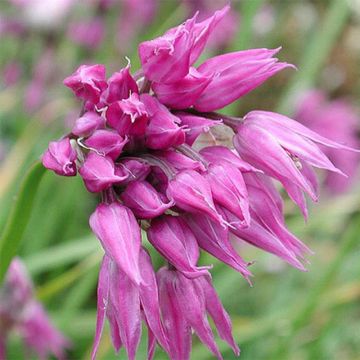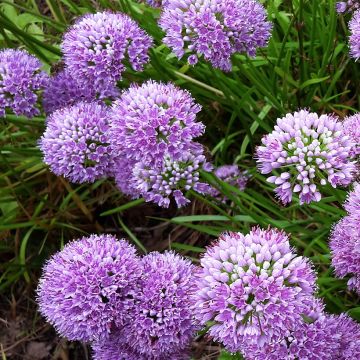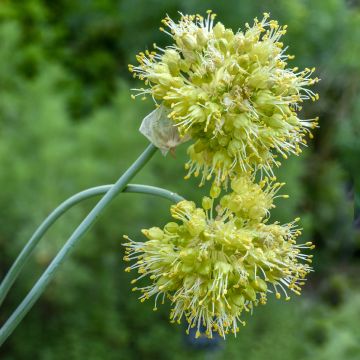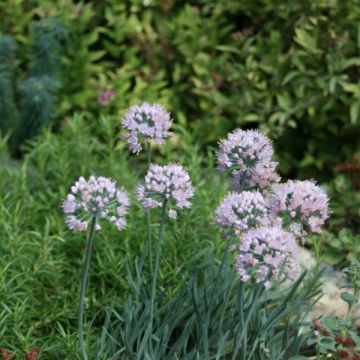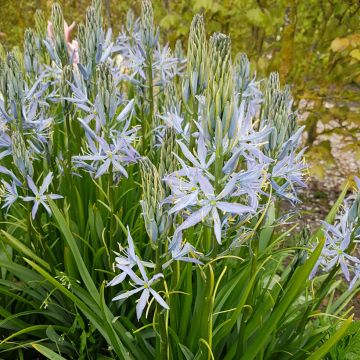Shipping country and language
Your country of residence may be:
Your country of residence is:
For a better user experience on our website, you can select:
Your shipping country:
Andorra
Austria
Belgium
Bulgaria
Canada
Chile
Croatia
Cyprus
Czechia
Denmark
Estonia
Finland
France
Germany
Greece
Hungary
Iceland
Ireland
Italy
Latvia
Lithuania
Luxembourg
Malta
Monaco
Netherlands
Poland
Portugal
Romania
Slovakia
Slovenia
Spain
Sweden
Switzerland
United Kingdom
We only deliver seed and bulb products to your country. If you add other products to your basket, they cannot be shipped.
Language:
French
German
Spanish
English
My Account
Hello
My wish lists
Plantfit
Log in / Register
Existing customer?
New customer?
Create an account to track your orders, access our customer service and, if you wish, make the most of our upcoming offers.
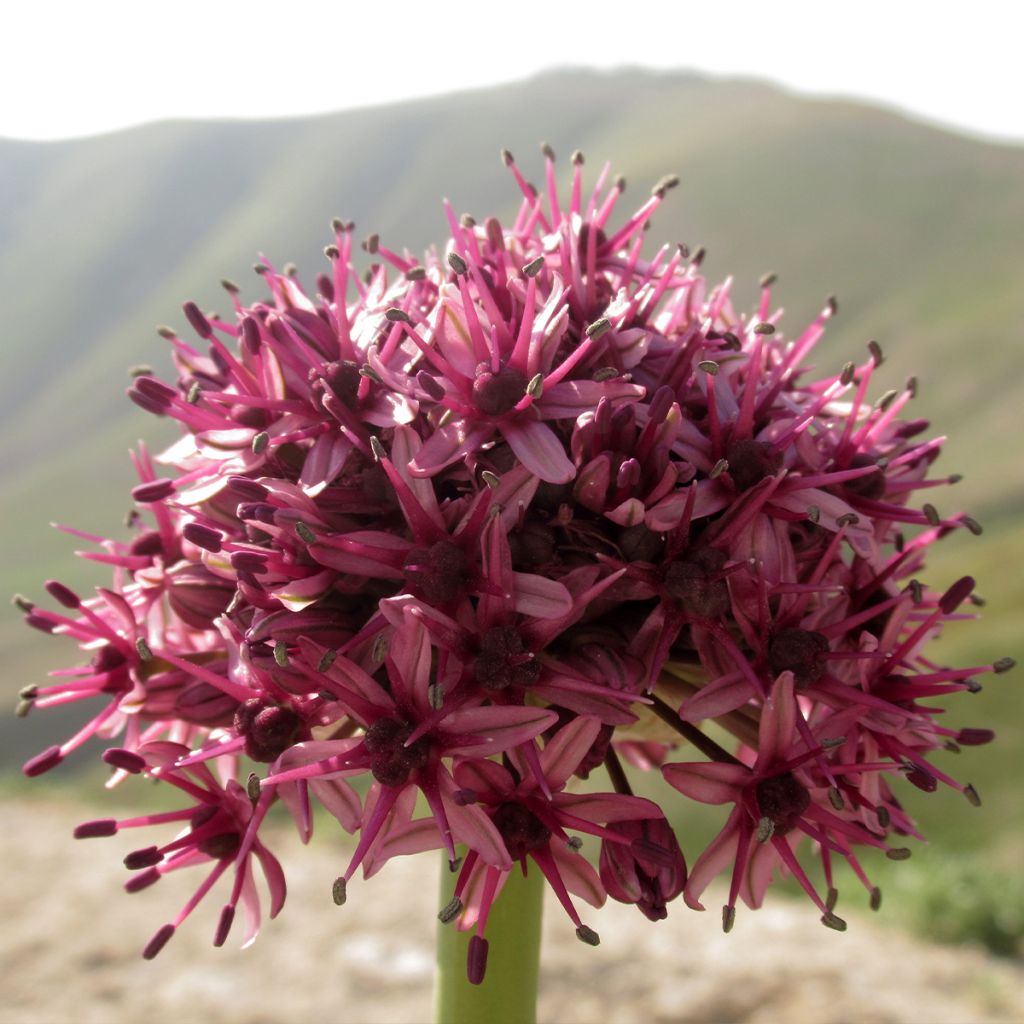

Allium aschersonianum - Ail d'ornement, Ail d'Ascherson
Allium aschersonianum
Allium aschersonianum
Ascherson's garlic, Ornamental Onion
Order in the next for dispatch today!
Dispatch by letter from €3.90.
Delivery charge from €5.90 Oversize package delivery charge from €6.90.
More information
This item is not available in your country.
Schedule delivery date,
and select date in basket
This plant carries a 6 months recovery warranty
More information
We guarantee the quality of our plants for a full growing cycle, and will replace at our expense any plant that fails to recover under normal climatic and planting conditions.
From €5.90 for pickup delivery and €6.90 for home delivery
Express home delivery from €8.90.
Does this plant fit my garden?
Set up your Plantfit profile →
Description
Allium aschersonianum, sometimes given as a synonym of Allium eximium, is a wild ornamental garlic that is still relatively uncommon in horticultural trade. This species has early flowering, composed of large-sized flower heads in the shape of a regular ball. They boast a beautiful reddish-purple colour. Its ornamental qualities should make it a welcome addition to our gardens, although it is not among the most accommodating under cold and humid climates. From its origins, this garlic has retained a marked preference for semi-arid climates, which are very dry in summer and in winter. Ascherson's garlic is a collector's plant that will delight enthusiasts of wild beauty.
Allium aschersonianum is native to semi-desert areas in southern Turkey, Jordan, Israel, Palestine, and northern Libya, where it blooms as early as the end of winter. It is a bulbous plant resistant to dry cold (down to -12°C (10.4°F)). It requires a very sunny exposure and soil rich in gravel or sand that does not retain water. Ornamental garlics belong to the Amaryllidaceae family, just like their cousins leeks, garlic, and onions.
It is a perennial herbaceous bulbous plant. The foliage emerges in autumn or winter in warm and dry climates, but appears later in cold and humid ones, usually in April. The 3 to 5 beautiful leaves of this ornamental garlic are wide, gutter-shaped, tapered at their ends, and sometimes twisted. They reach 4 to 6cm (2in) in width and 50 to 60cm (20 to 24in) in length, and are of a fairly light glaucous green colour. Initially upright, they bend over at a later stage. The floral stem, 60 to 70cm (24 to 28in) tall, appears between the leaves in April-May in hot climates, in June in cooler areas. A spherical umbel, 6 to 7cm (2 to 3in) wide, appears at the stem's tip. It is composed of a multitude of star-shaped flowers in shades of purple, pink, and reddish-purple. The seeds, which are produced in large quantities, easily self-sow in loose soil. The foliage dries up after flowering, a sign that the bulb enters a period of rest before the arrival of summer drought. This allium is susceptible to rot in overly wet soil, both in summer and winter.
Ascherson's garlic will be perfect for bringing life to a rockery or gravel bed, or even to a dry garden without irrigation. This colourful plant combines wonderfully with ornamental grasses such as Stipa tenuifolia or S. barbata, thistles (Eryngium, Echinops ritro), nigellas, Californian poppies, lavenders, thymes, and low-growing cistus, for example. Place it in small groups of 3 to 5 bulbs among other plants, and it will surprise you every year with its early flowering.
Allium aschersonianum in pictures
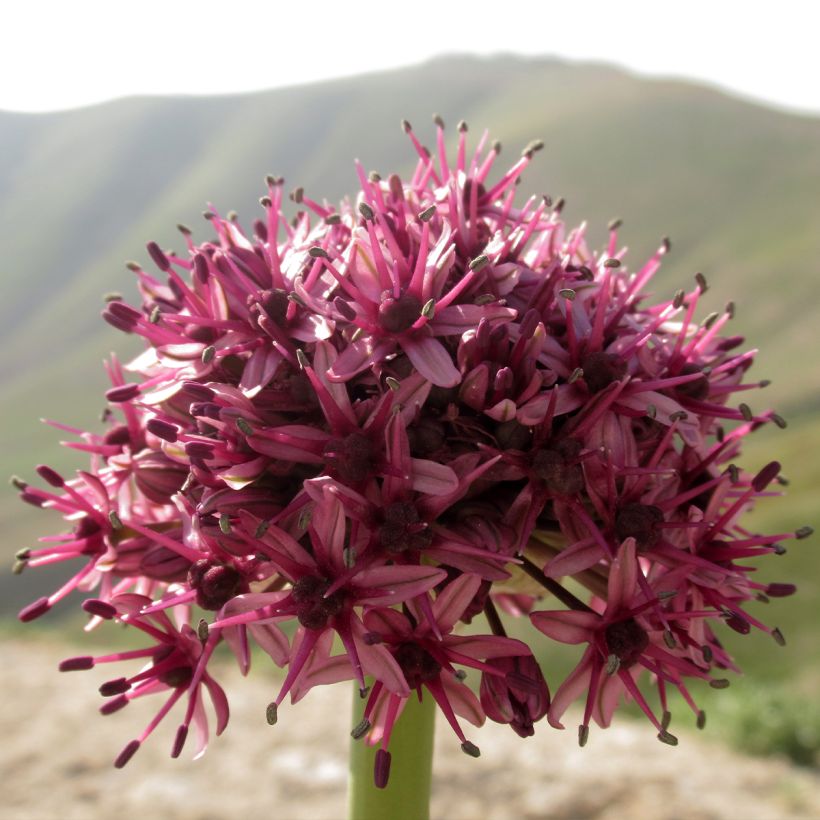

Plant habit
Flowering
Foliage
Botanical data
Allium
aschersonianum
Alliaceae - Liliaceae
Ascherson's garlic, Ornamental Onion
Allium eximium
West Asia
Other Allium
Planting and care
Plant Allium aschersonianum in summer or early autumn, at a depth of 8 to 10cm (3 to 4in), with each bulb spaced 15cm (6in) apart. It is a winter-growing garlic that requires well-drained soil that does not retain water. The return of autumn and winter rains triggers its growth period. However, after flowering, the bulb likes to rest in dry soil during summer. This species is sensitive to rot in moist soil during summer. It tolerates poor soils well and accepts the presence of limestone. Choose a warm location with a very sunny exposure. Add sand and fine gravel to the planting area to effectively drain the soil. Heavy soils should be avoided to ensure its long-term survival. Plant on a mound, in a rockery, or in a raised bed, if necessary (a 20 cm (8in) difference in height is sufficient). If water does not stagnate, it can withstand quite harsh winters, down to -12°C (10.4°F). Young plants grown from seed take 3 to 4 years before they flower.
Planting period
Intended location
Care
This item has not been reviewed yet - be the first to leave a review about it.
Spectacular bulbs
Haven't found what you were looking for?
Hardiness is the lowest winter temperature a plant can endure without suffering serious damage or even dying. However, hardiness is affected by location (a sheltered area, such as a patio), protection (winter cover) and soil type (hardiness is improved by well-drained soil).

Photo Sharing Terms & Conditions
In order to encourage gardeners to interact and share their experiences, Promesse de fleurs offers various media enabling content to be uploaded onto its Site - in particular via the ‘Photo sharing’ module.
The User agrees to refrain from:
- Posting any content that is illegal, prejudicial, insulting, racist, inciteful to hatred, revisionist, contrary to public decency, that infringes on privacy or on the privacy rights of third parties, in particular the publicity rights of persons and goods, intellectual property rights, or the right to privacy.
- Submitting content on behalf of a third party;
- Impersonate the identity of a third party and/or publish any personal information about a third party;
In general, the User undertakes to refrain from any unethical behaviour.
All Content (in particular text, comments, files, images, photos, videos, creative works, etc.), which may be subject to property or intellectual property rights, image or other private rights, shall remain the property of the User, subject to the limited rights granted by the terms of the licence granted by Promesse de fleurs as stated below. Users are at liberty to publish or not to publish such Content on the Site, notably via the ‘Photo Sharing’ facility, and accept that this Content shall be made public and freely accessible, notably on the Internet.
Users further acknowledge, undertake to have ,and guarantee that they hold all necessary rights and permissions to publish such material on the Site, in particular with regard to the legislation in force pertaining to any privacy, property, intellectual property, image, or contractual rights, or rights of any other nature. By publishing such Content on the Site, Users acknowledge accepting full liability as publishers of the Content within the meaning of the law, and grant Promesse de fleurs, free of charge, an inclusive, worldwide licence for the said Content for the entire duration of its publication, including all reproduction, representation, up/downloading, displaying, performing, transmission, and storage rights.
Users also grant permission for their name to be linked to the Content and accept that this link may not always be made available.
By engaging in posting material, Users consent to their Content becoming automatically accessible on the Internet, in particular on other sites and/or blogs and/or web pages of the Promesse de fleurs site, including in particular social pages and the Promesse de fleurs catalogue.
Users may secure the removal of entrusted content free of charge by issuing a simple request via our contact form.
The flowering period indicated on our website applies to countries and regions located in USDA zone 8 (France, the United Kingdom, Ireland, the Netherlands, etc.)
It will vary according to where you live:
- In zones 9 to 10 (Italy, Spain, Greece, etc.), flowering will occur about 2 to 4 weeks earlier.
- In zones 6 to 7 (Germany, Poland, Slovenia, and lower mountainous regions), flowering will be delayed by 2 to 3 weeks.
- In zone 5 (Central Europe, Scandinavia), blooming will be delayed by 3 to 5 weeks.
In temperate climates, pruning of spring-flowering shrubs (forsythia, spireas, etc.) should be done just after flowering.
Pruning of summer-flowering shrubs (Indian Lilac, Perovskia, etc.) can be done in winter or spring.
In cold regions as well as with frost-sensitive plants, avoid pruning too early when severe frosts may still occur.
The planting period indicated on our website applies to countries and regions located in USDA zone 8 (France, United Kingdom, Ireland, Netherlands).
It will vary according to where you live:
- In Mediterranean zones (Marseille, Madrid, Milan, etc.), autumn and winter are the best planting periods.
- In continental zones (Strasbourg, Munich, Vienna, etc.), delay planting by 2 to 3 weeks in spring and bring it forward by 2 to 4 weeks in autumn.
- In mountainous regions (the Alps, Pyrenees, Carpathians, etc.), it is best to plant in late spring (May-June) or late summer (August-September).
The harvesting period indicated on our website applies to countries and regions in USDA zone 8 (France, England, Ireland, the Netherlands).
In colder areas (Scandinavia, Poland, Austria...) fruit and vegetable harvests are likely to be delayed by 3-4 weeks.
In warmer areas (Italy, Spain, Greece, etc.), harvesting will probably take place earlier, depending on weather conditions.
The sowing periods indicated on our website apply to countries and regions within USDA Zone 8 (France, UK, Ireland, Netherlands).
In colder areas (Scandinavia, Poland, Austria...), delay any outdoor sowing by 3-4 weeks, or sow under glass.
In warmer climes (Italy, Spain, Greece, etc.), bring outdoor sowing forward by a few weeks.





